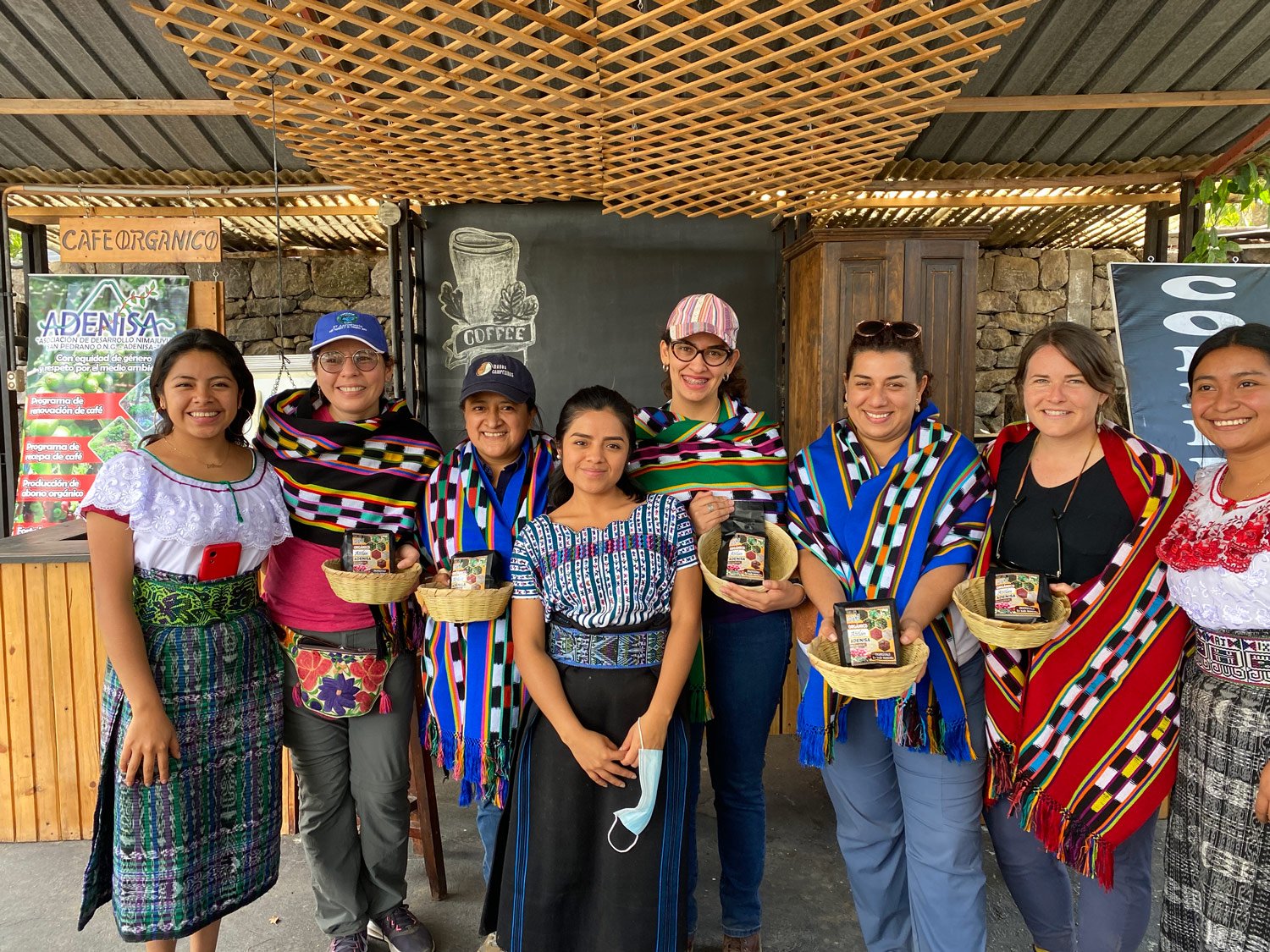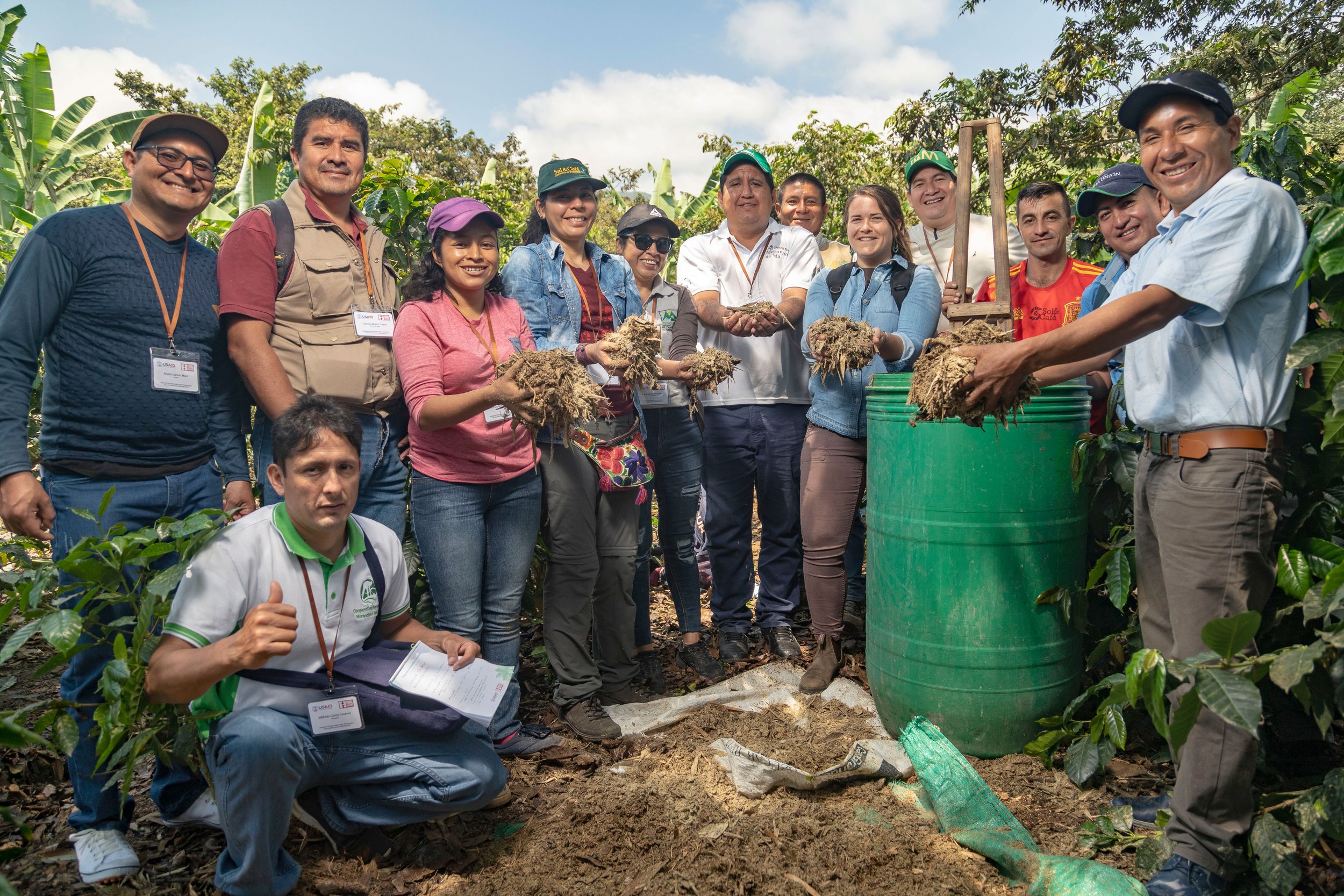We Lost USAID Funding, but We’re Keeping the Work Alive
Above, producer co-op participants at the 2022 CDP exchange in Paraguay.
What would you do if you had the chance to apply to the US government for a $4 million grant?
Back in 2010, we had this chance, and frankly, we were on the fence. After serious deliberation, we decided to apply. As a result, for almost 15 years, we managed farmer-focused development projects, directing resources and programming to small farmer co-ops and their members, with undeniably positive results. We were poised to implement the next wave of this work until, in February this year, the US government abruptly terminated USAID awards like ours. Like so many, we were stunned. Both Equal Exchange and the US government were contractually obligated to each other. We took those obligations seriously. This agreement had lasted through several administrations and led to real benefits to our farmer partners and to the goals of the US government. Based on these contracts, we had, in good faith, made future commitments to our farmer partners. We now find ourselves empty of funds for this work but full of experience, ideas, and determination to continue.
This seemed an opportune time to shine some light on the inspiring work we’ve done, and to share our plan to keep a portion of this work alive without future reliance on the government.
Above, youth representatives from our co-op partners visit a coffee farm in Guatemala during a 2022 youth exchange.
“Through the CDP, the capacities of youth have been strengthened, enabling them to have more opportunities and to take over productive tasks from their parents.”
Taking a risk to learn and grow
In 2004, the US government sought to add something new to their international development work: dedicated support for co-operatives. They created a Cooperative Development Program (CDP). This was to be administered through the United States Agency for International Development (USAID) which, at the time, was an active, staffed agency. As a co-op ourselves, supporting cooperatives is our wheelhouse, and it’s a pretty unique wheelhouse. This made us an appealing participant to the CDP.
Originally, our hesitations included:
Fear of becoming dependent on grants instead of our chosen business model: self-sufficient mission-based trade with farmer groups abroad and then, in turn, with customers in the US, including food co-ops, stores, cafes, and other organizations.
Fear that this might be a distraction from our core business. Who would do this work? Did we have the capacity to direct more work hours and creative thinking toward this work, and if so, would it be at the expense of the work we were already committed to advancing?
Would we be able to do it differently and better than others already doing this work?
Would working with a government agency be an experience in more bureaucracy than impact?
The history of USAID as a tool of foreign policy, which in many cases was diametrically opposed to our worldview and values.
Ultimately, we came around to giving it a shot. That was no small decision. We take seriously our core mission, our capable staff people, and our farmer partners’ time. Here are some of the opportunities we came to believe in:
Our mission of transforming the food system is a massive goal. Transformation typically requires creativity and multiple approaches all working from different angles, ideally in the same general timeframe.
Internally we were already starting to float some non-traditional ideas. We saw our mission having an impact. But we also saw that the power dynamics in the food system, and for small farming communities specifically, were not improving enough or quickly enough. We actively wanted to experiment to try more things to magnify change. The grant opportunity allowed a pathway to engage differently with farmer partners.
The grant program would welcome us to work with our existing farmer partner co-ops. We already had the network. With many of these partners, we had decades of experience knowing their strengths and the areas they wanted to develop to become stronger organizations.
We started to have some clear ideas forming in our minds for ways this program could benefit the communities we work with. We realized that our experience, analysis, and partnerships put us in a pretty unique position to start immediately on this type of work.
Cooperatives often know possible solutions but need the resources to test and share them to build more resilient jobs, communities, cooperative businesses, and cooperative networks.
Above, producer co-op participants and Equal Exchange staff at the 2022 CDP exchange in Paraguay.
“There are many factors that influence the productivity of farms, such as pest management with organic fertilizers or the use of fertilizers, which makes a difference and is noticeable... Additionally, there is a motivation issue for the producer who feels they are not alone.”
The work evolves
For 14+ years, we managed a dynamic program of grant work funded by the USAID/Cooperative Development Program. We had experienced staff people take on a management team role for this work, and we hired new staff to implement these programs with our farmer partner organizations.
Our first grant was $4.4 million, spanning from 2010 to 2018. The experience had its learning curves and challenges, as any worthwhile project would, and throughout the years, we built up a track record of positive results. As that period came to a close, we had lessons learned and enthusiasm inspiring us to re-up.
We applied for and secured a new grant for $4 million from 2018 to 2024. Here are some statistics from that second phase of the grant, also shown in the accompanying map:
10,000+ farmer members participated in grant activities from
9 co-op organizations in
4 countries: Guatemala, Mexico, Paraguay, Peru
4 organic agricultural products: coffee, cacao, bananas, sugarcane
Above, Río y Valle co-op members preparing their bananas for export.
“In the Río y Valle cooperative, more than 50% of the workers are women, as they are being given the opportunity to demonstrate that they have the same rights and opportunities as men to hold positions of responsibility.”
A collaborative approach
Our aim was to have defined goals and aligned pillars of project types but still enable participating co-ops to develop their own specifics. This intentionally created a framework for united work that farmer co-ops from different communities and countries could do simultaneously. It put individual projects into the wider perspective of building and strengthening the cooperative economy. The work was collaborative and dynamic. It prioritized innovation, which led to some breakthrough approaches and programs. A common thread through the years was the commitment to the exchange of information—between farmers within the same co-op and also between co-ops—sometimes crossing country and even continental boundaries.
The work over the last 14 years was layered and iterative. Successive years built upon the activities and analysis of prior years. That culminated in the latest forward-facing plan, started in 2023 with five pillars of activity:
Productivity: Produce more output on the same amount of land while keeping organic practices through projects like improving soil health and water retention and supporting innovation in biofertilizer production at the farm and community level.
Quality: Improve the quality of crops, which often improves income, while developing a shared vocabulary of crop quality to support access to new markets.
Capitalization & Financial Management: Advance economic self-reliance by building member equity and savings programs to reduce reliance on expensive mainstream lenders for the organization and individual members.
Gender Equity: Change norms and expectations held by all genders while creating more opportunities for women as farmer members, staff members, and leaders.
Governance: Train staff and leaders in hard and soft skills for effectively managing democratic organizations and planning for succession.
Across all five pillars, co-ops were also charged with incorporating youth participation, to both bring new ideas to the co-ops and co-op ideas to the young. As is the case in many farming communities, it’s not a given that young people will become farmers. Grant programs helped co-ops experiment in this arena.
Above left, Jose Maria Cabrera delivers sugar cane to his co-op's mill in Paraguay. Above right, Equal Exchange’s Laura Bechard visiting with Rosalba Burgos, sugar farmer and member of Manduvirá Co-op.
“We have made significant changes in the cooperative regarding gender... Today we are more aware of the work to be done on gender issues, as well as the knowledge and tools like the Gender Policy and the Workplace Harassment Prevention Route, which have enabled us to respond to a case of sexual harassment... We now face the challenge of creating a youth committee and continuing to implement the policy, which is being monitored.”
Boosting and rethinking our shared work
Our “regular” business model facilitates community development. How did the grant work differ? First and foremost, it added community development resources on top of the existing work. Put simply, this channeled more investment to small farming communities. By funding co-ops this way, the resources went to established organizations that were democratically accountable to their farmer members, with structures and staff already in place.
Second, it linked Equal Exchange and our partner co-ops in a new and strategic way. Unlike the social premiums from our product purchases, which purposely (and correctly) exclude any influence by Equal Exchange on how to spend it, the grant program did the opposite: it united us in visioning together. We had the chance to step back and ask ourselves an exciting question: What would help farmer co-ops to not just survive, but thrive?
The end of an era and the beginning of something new
Like so many groups who were part of the USAID network, in February of this year, we learned in an unceremonious manner that this program was over. Our contracted $4.9 million funds would not be available. We were heartbroken. We had difficulty informing our four grant-funded staff members and our nine partner co-ops. Everyone involved was grappling with complex emotions. We were proud of the innovative, collaborative work that we had brought into this world together. We felt the loss of ambitious upcoming plans that would not, after all, be implemented.
But co-ops are born out of the energy and conviction that we can create the solutions that we need. Ourselves. Collectively. That spirit has led us to a new ambitious endeavor: we will carry on with this development work. We do not have the sizable funds to do it at the scale we had been planning through USAID/CDP, but doing none of that work feels unacceptable to us now.
We aim to raise $250,000-$500,000 to seed this next era of our development work. We invite you to join us in this effort by making a donation. These donations will not be tax-deductible. We are not a non-profit, but we have learned through the last 15 years—surprising even ourselves—that co-operative organizations working together on development can add something beautiful, practical, and unique to our cultural and business landscapes. Now that we’ve spent time and years asking this question, we must keep answering it: What would help farmer co-ops survive and thrive?
More resources
Animated video summarizing CDP grant work, 2018-2024 (3 min)
Articles featuring CDP work














What would you do if you had the chance to apply to the US government for a $4 million grant? Back in 2010, we had this chance, and frankly, we were on the fence. After serious deliberation, we decided to apply. As a result, for almost 15 years, we managed farmer-focused development projects, directing resources and programming to small farmer co-ops and their members, with undeniably positive results. We were poised to implement the next wave of this work until, in February this year, the US government abruptly terminated USAID awards like ours.